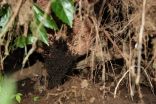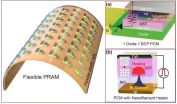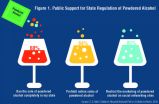(Press-News.org) The city where an individual lives can influence the risk of dying by suicide, according to a new study from sociologists at Rice University and the University of Colorado at Boulder.
"Suicide in the City: Do Characteristics of Place Really Influence Risk?" appears in the latest edition of Social Science Quarterly. The study found that adults living in cities with more socio-economic disadvantages and fewer families living together have higher odds of suicidal death than adults living in less-disadvantaged cities and cities with more families living together.
The findings support classic sociological arguments that the risk of suicide is indeed influenced by the social climate and cannot simply be explained by the sum of individual characteristics, the researchers said.
"Many people see suicide as an inherently individual act," said Justin Denney, an assistant professor of sociology at Rice and director of the Urban Health Program, part of Rice's Kinder Institute for Urban Research. "However, our research suggests that it is an act that can be heavily influenced by broader socio-economic and family factors."
In part one of the two-part study, the results showed that respondents living in cities with a higher percentage of family households demonstrated a lower risk of suicide than did respondents in cities where more residents lived alone or with unrelated friends.
The participants surveyed were divided into four groups based on the percentage of that city's total population living in family-like households. The researchers organized the participant information by taking all the cities in the U.S. and dividing them into quartiles based on U.S. Census information on the proportion of residents living in families; then, the survey respondents were assigned to the quartile that represented the city in which they lived.
After statistically adjusting for the family-living situation of adult survey respondents, including their marital status, the researchers found that the group of individuals at greatest risk for suicide lived in cities where 25 percent of residents or fewer lived in family settings. In fact, these adults -- whether they were married with children or single and living alone -- were more than two times more likely to die by suicide compared with similar adults who lived in cities where 81 percent or more of the city's population lived in family settings.
The second part of the study showed that after statistical adjustments for educational attainment, household income and employment, survey respondents who lived in more socio-economically disadvantaged cities experienced a higher likelihood of death by suicide. For example, for every standard-deviation-unit increase in socio-economic disadvantage for the city of residence, the risk of suicide among adults living in the city -- whether they were employed, unemployed or even retired -- increased by 7 percent.
"Thankfully, suicide is a relatively rare cause of death." Denney said. "But finding that the characteristics of the places we live can influence how long we live and how we die is an important consideration in addressing health disparities in the U.S."
The research was conducted with data from the National Institutes of Health's National Health Interview Survey, which includes health data of more than a million adults living in the U.S. between 1986 and 2003. The study focused exclusively on population areas with more than 50,000 residents.
Denney said the research is consistent with previous statements that high rates of family households contribute to the stability and unity of communities, which in turn decreases problematic behavior. He said the findings support the claim that community-level disadvantage may have broad impacts on the mental and emotional well-being of residents. He and his fellow researchers hope that their findings will help decrease the risk of suicide by encouraging more investment in both individual and area-level resources aimed at fostering social integration and connectedness and eliminating socioeconomic disadvantages.
INFORMATION:
Tim Wadsworth, Richard Rogers and Fred Pampel, sociologists at the University of Colorado at Bounder, coauthored the study, which is available online at http://onlinelibrary.wiley.com/doi/10.1111/ssqu.2015.96.issue-2/issuetoc.
Follow Rice News and Media Relations on Twitter @RiceUNews.
Related materials:
Justin Denney bio: http://sociology.rice.edu/denney/
PHILADELPHIA (June 15, 2015) - Army ants, the nomadic swarming predators underfoot in the jungle, can take down a colony of prey animals without breaking a sweat. But certain army ant species can't take the heat.
According to a new study from Drexel University, underground species of army ants are much less tolerant of high temperatures than their aboveground relatives--and that difference in thermal tolerance could mean that many climate change models lack a key element of how animal physiology could affect responses to changing environments.
At face value, this is ...
Scientists at the University of Southampton have found a way to pry into the private lives of fish - by looking in their ears.
By studying ear stones in fish, which act as tiny data recorders, scientists can now reveal migration patterns and even provide insights into their sex life.
Managing fish stocks in a sustainable way is a major challenge facing scientists, conservationists, policy makers and fishermen. To get the best results, accurate information about the movements of fish in the wild is needed but gathering this information is extremely difficult.
Tiny ...
Daejeon, Republic of Korea, Jun 15, 2015 -- Phase change random access memory (PRAM) is one of the strongest candidates for next-generation nonvolatile memory for flexible and wearable electronics. In order to be used as a core memory for flexible devices, the most important issue is reducing high operating current. The effective solution is to decrease cell size in sub-micron region as in commercialized conventional PRAM. However, the scaling to nano-dimension on flexible substrates is extremely difficult due to soft nature and photolithographic limits on plastics, thus ...
From the adventures of Lara Croft in Tomb Raider to the apocalyptic drama of Fallout - new research from the University of Warwick has revealed the secret to how some of the world's most iconic video games were created.
Professor David Stark says it is because the creative teams behind these ground-breaking titles had the ideal mix of career backgrounds and working relationships.
He claims his research offers a fresh insight into the factors which
stimulate innovation - theories that can also apply away from the video gaming industry.
The 'Big Data' analysis looked ...
Humans are unlikely to be the only animal capable of self-awareness, a new study has shown.
Conducted by University of Warwick researchers, the study found that humans and other animals capable of mentally simulating environments require at least a primitive sense of self. The finding suggests that any animal that can simulate environments must have a form of self-awareness.
Often viewed as one of man's defining characteristics, the study strongly suggests that self-awareness is not unique to mankind and is instead likely to be common among animals.
The researchers, ...
Scientists from the Icahn School of Medicine at Mount Sinai have developed a new technique to more precisely analyze bacterial populations, to reveal epigenetic mechanisms that can drive virulence. The new methods hold the promise of a potent new tool to offset the growing challenge of antibiotic resistance by bacterial pathogens. The research was published today in the journal Nature Communications, and conducted in collaboration with New York University Langone Medical Center and Brigham and Women's Hospital of Harvard Medical School.
The information content of the ...
Scientists at Helmholtz Zentrum München have now discovered how Epstein-Barr virus (EBV) conceals itself in human cells. A main culprit for its bad visibility by the immune system is the viral protein LMP2A. As published in the scientific journal PLOS Pathogens, the protein helps EBV-infected cells hide from T cells. This camouflage through the LMP2A protein may play a major role in the causation of cancer by EBV.
„We suspected that a viral protein was behind EBV's camouflage in cancerous cells", says Dr. Andreas Moosmann from the Research Unit Gene Vectors ...
ANN ARBOR, Mich. -- After this year's legalization of powdered alcohol, some states have already banned it -- a move that the majority of the public supports, according to a new University of Michigan C.S. Mott Children's Hospital National Poll on Children's Health.
Adults across the country share the same top concern about the new alcohol-on-the-go product: potential misuse among underage youth.
Packaged in travel-friendly pouches, powdered alcohol will be available in flavors of distilled spirits like vodka and rum and also mixed drinks. One packet of powdered alcohol ...
Lisbon, 15 June 2015: In October last year the Gothenburg, Sweden, group of Mats Bra?nnstro?m announced the world's first live birth following the transplantation of a donated uterus.(1) In an editorial accompanying the report, The Lancet listed this remarkable achievement as comparable to only three other landmarks in the history of reproductive medicine: "the arrival of in-vitro fertilisation (IVF) in the late 1970s; the development of intracytoplasmic sperm injection (ICSI) in the early 1990s; the first ovarian transplant a decade ago; and [now] the first live birth ...
Lisbon, 15 June 2015: The academic performance of children conceived by assisted reproduction techniques (ART) is no better or worse than that of spontaneously conceived children when assessed at the ninth grade of their school education.(1) Similarly, ART singletons and ART twins also had comparable test scores, suggesting, say the investigators, that "the higher obstetric risk" identified in ART pregnancies - and particularly in twins - "is not associated with poorer academic performance in adolescence".(2)
"These findings are very important for infertile patients," ...


